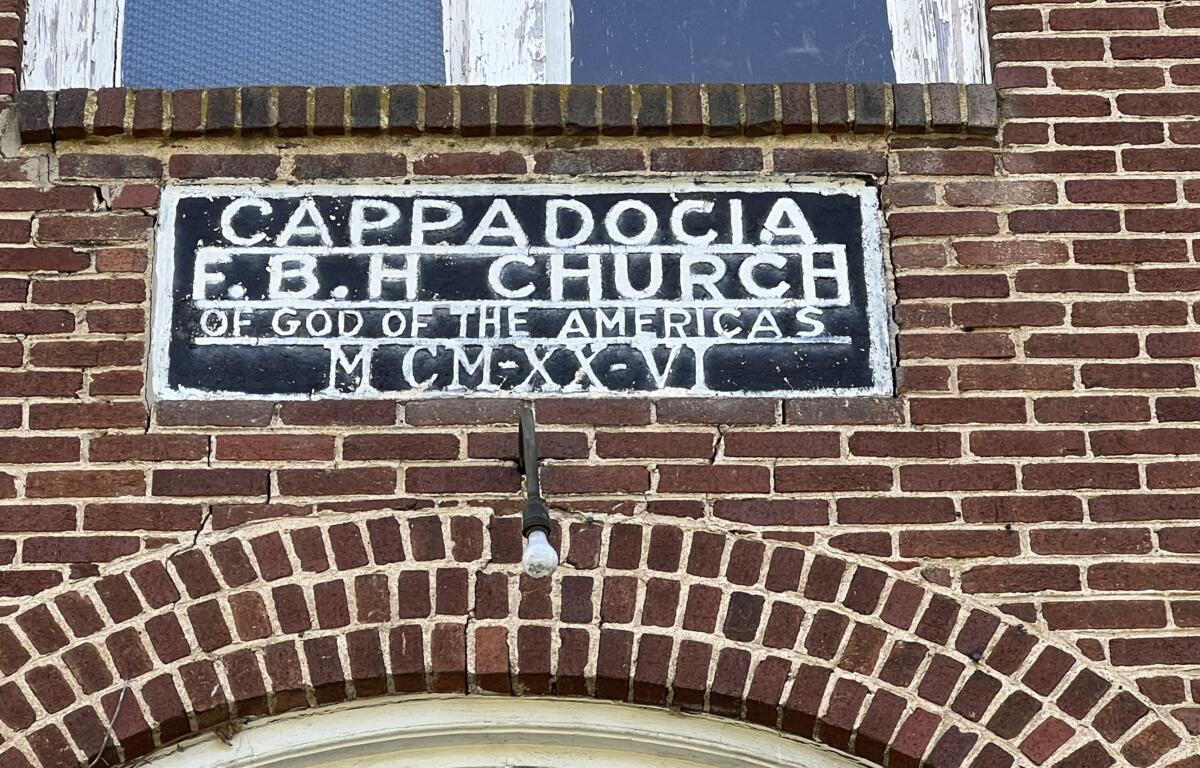ASHEVILLE, N.C. (828newsNOW) —
It wasn’t the biggest housing project on a planning commission’s agenda Wednesday, but a plan to convert the vacant Cappadocia F.B.H. Church into three residential units represents a milestone for preservation in Asheville’s historically African-American East End/Valley Street neighborhood.
The church, dating back to the era of segregation in 1908, once was slated for demolition until it was acquired by the Preservation Society of Asheville & Buncombe County in an agreement with the developer.
Now it’s seeking conditional zoning for an adaptive reuse, with the church converted into three residential units, with new sidewalks, parking, grading and landscaping.
The Asheville Planning and Zoning Commission unanimously and enthusiastically supported a conditional zoning change during its meeting Wednesday at City Hall, and now it will go to the City Council for a final vote.
As the organization explains in its online history of the site, “The Preservation Society hopes to rehab the church and the residence into affordable housing options, thereby not only achieving its goal of historic preservation but also meeting the urgent need for affordable housing options in Asheville.”
Jessie Landl, executive director of The Preservation Society, saving the historic structure but also providing affordable housing is “the best of both worlds.”
The commission’s agenda also included an informal presentation on tree canopy preservation. Consideration of a proposed 42.65-acre development with 350 units of housing and 34,000 square feet of commercial space north of Smokey Park Highway at 172 Moody Ave. was postponed.
As the Preservation Society notes in its history of the site, the church is “representative of the African-American post-reconstruction struggle to survive and thrive in a segregated community.”
Since the era of slavery and the reconstruction years following the Civil War, when formerly-enslaved people still struggled to gain access to education, teaching through churches played a critical role.
In Asheville, the area also known as “Catholic Hill” became a distinctly African-American neighborhood by the 1890s.
The church at 57 Max St. traces its roots to the Fire Baptized Holiness (F.B.H.) Church. A cornerstone lists the church’s construction starting in 1908, although other sources suggest 1909. It originally was constructed of wood. In 1926, the congregation decided to build a larger structure, which includes the current brick facade.
The Cappadocia F.B.H. Church hosted religious leaders like Gustavus Guyhart Gary, an early trustee who later became Bishop, and was an important site as the neighborhood developed.
In the 1970s, when the area was targeted for so-called “urban renewal,” hundreds of structures deemed dilapidated or not up to city codes were demolished. But the Cappadocia F.B.H. Church stood the test of time.
“This is a neighborhood that lost more than half their buildings to ‘urban renewal,'” Landl said in a telephone interview on Wednesday, when she was at an out-of-state conference.
After the church was slated to be demolished and replaced with housing, the Preservation Society consulted with the East End/Valley Street Neighborhood Association, which voted unanimously to endorse saving it, Landl said.
Because it’s an adaptive reuse, the proposal is to split the main floor of the church into three small apartments — two in the front and one in the back — with the vaulted ceilings preserved.
Landl described it as “smallish apartments with these grand ceilings. From a preservation standpoint, it’s important to us that you know what that space was,” she said.
The Preservation Society has saved a handful of pews from the original church and is trying to think of ways to incorporate them into the project, Landl said.
The zoning matter considered Wednesday does not lock in an affordability level, but Landl said that the organization is working with the Asheville-Buncombe Community Land Trust and Dogwood Health Trust to complete the project. It has a goal of making the units “deeply affordable” to lower-income families, but the exact price level has yet to be determined, Landl said.
At Wednesday’s meeting, several commissioners spoke enthusiastically about the project. “Go Team!” Commissioner Susan Bean exclaimed, echoing support expressed by several other commissioners.
Longtime neighborhood resident, the Rev. S.F. James “Jim” Abbott, shared the enthusiasm.
“We’re all in support of this,” Abbott said. He told commissioners the neighborhood had been decimated by “urban renewal,” red-lining and the displacement of longtime residents over the decades, so preserving the church structure for affordable housing will be a blessing.
“If we pass this, we’ll be able to provide some deeply affordable housing to maybe bring some of the families who were displaced back into the neighborhood,” Abbott said.
Abbott told commissioners that the alternative was gentrification.
“We are really concerned that this historic church not become a million (dollar) plus single-family dwelling,” he said. “We are all-in for preserving this church.”
This story is being updated.






